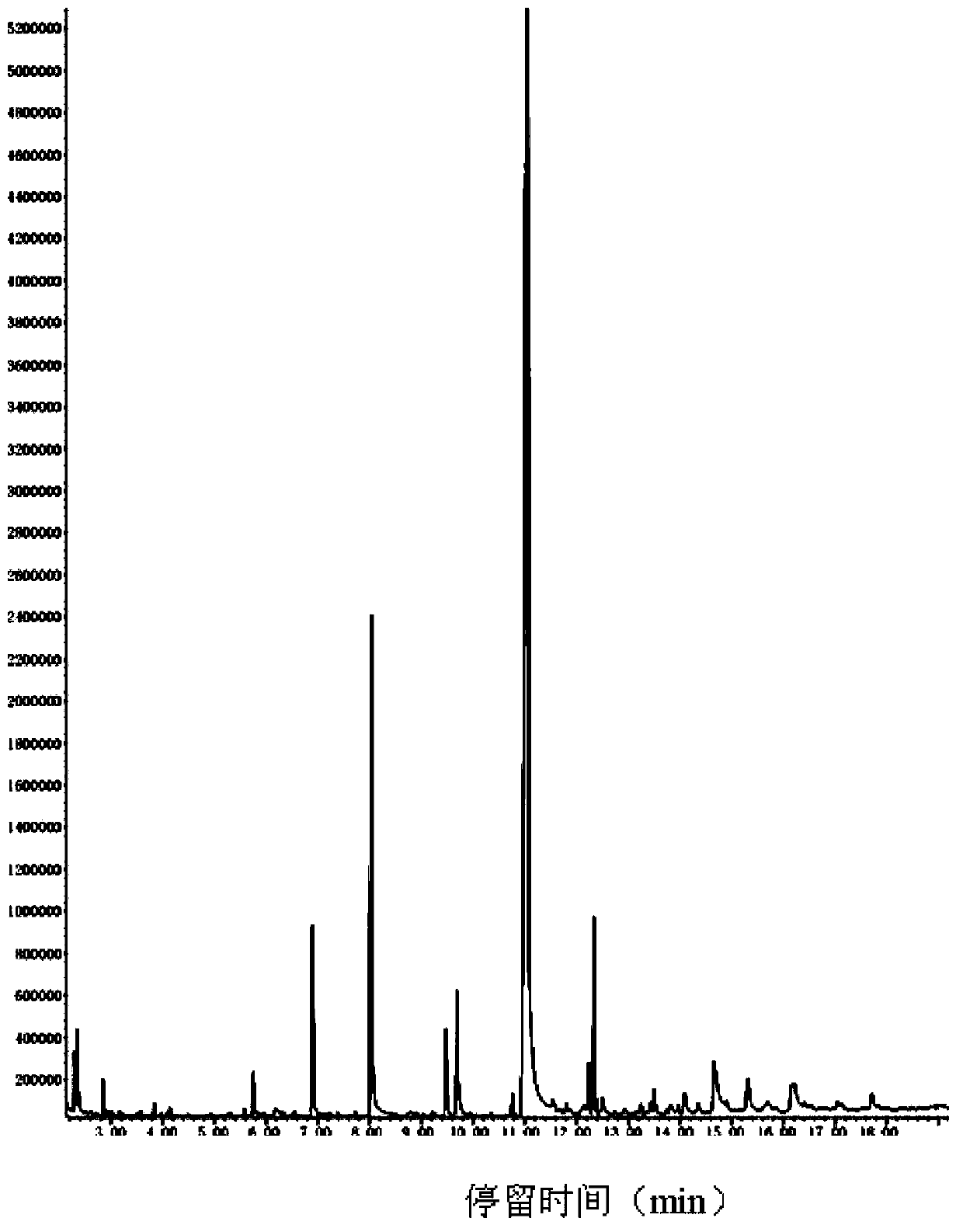Application of transition metal phosphide in catalytic conversion of lignin
A transition metal, catalytic conversion technology, applied in the preparation of organic compounds, heterogeneous catalyst chemical elements, physical/chemical process catalysts, etc., to alleviate the tension of petroleum resources, the preparation method is simple, and the effect of avoiding environmental pollution problems
- Summary
- Abstract
- Description
- Claims
- Application Information
AI Technical Summary
Problems solved by technology
Method used
Image
Examples
Embodiment 1
[0041] Weigh diammonium hydrogen phosphate and dissolve it in deionized water, then add transition metal salt ammonium metatungstate and dissolve it, and impregnate an equal volume into Al 2 o 3 , and then oven-dried at 120°C for 12h, then calcined at 500°C for 4h, and the catalyst precursor was subjected to a temperature-programmed reduction reaction to obtain a transition metal phosphide WP / Al with a tungsten loading of 20wt%. 2 o 3 (20wt%WP / Al 2 o 3 ), the specific temperature-programmed reduction process is: in H 2 In the atmosphere, 0.5 g of the precursor was placed in a quartz reaction tube and the temperature was raised to 300 °C, then raised to 650 °C at 1 °C / min and kept for 120 min, and then lowered to room temperature 25 °C.
[0042] Weigh diammonium hydrogen phosphate and dissolve it in deionized water, then add transition metal salt ammonium metatungstate and dissolve it, evaporate the water in it, dry it, and carry out a temperature-programmed reaction under ...
Embodiment 2
[0044] The catalyst preparation method is the same as in Example 1, except that the difference from Example 1 is that the concentration of the transition metal salt in the impregnating solution can be changed, or through multiple impregnations, catalysts with different loads can be obtained, such as the amount of W being 1wt%, respectively. 5wt%, 10wt%, 15wt%, 20wt%, 30wt% and 50wt% WP / Al 2 o 3 catalyst.
Embodiment 3
[0046] The catalyst preparation method is the same as in Example 1, and the difference from Example 1 is that the carrier is changed, and the transition metal salt and diammonium hydrogen phosphate solution are impregnated into SiC, SiO 2 Or on acidified activated carbon (AC) carrier, phosphides loaded on different carriers can be obtained.
PUM
 Login to View More
Login to View More Abstract
Description
Claims
Application Information
 Login to View More
Login to View More - R&D
- Intellectual Property
- Life Sciences
- Materials
- Tech Scout
- Unparalleled Data Quality
- Higher Quality Content
- 60% Fewer Hallucinations
Browse by: Latest US Patents, China's latest patents, Technical Efficacy Thesaurus, Application Domain, Technology Topic, Popular Technical Reports.
© 2025 PatSnap. All rights reserved.Legal|Privacy policy|Modern Slavery Act Transparency Statement|Sitemap|About US| Contact US: help@patsnap.com

